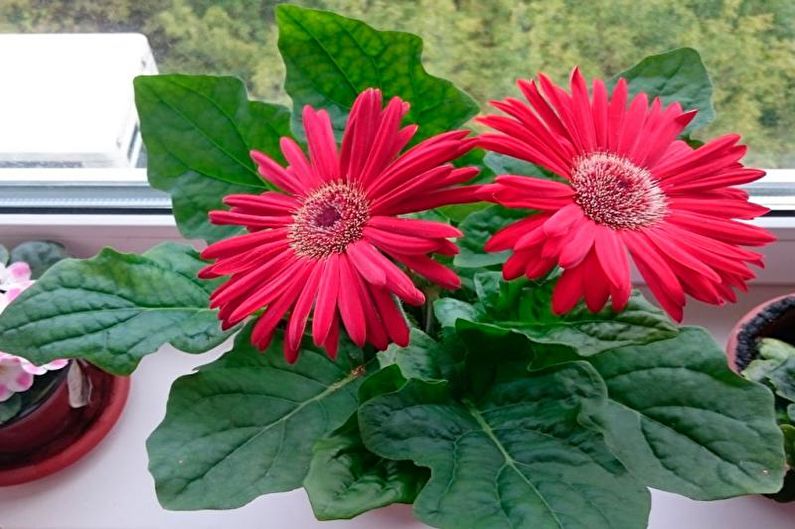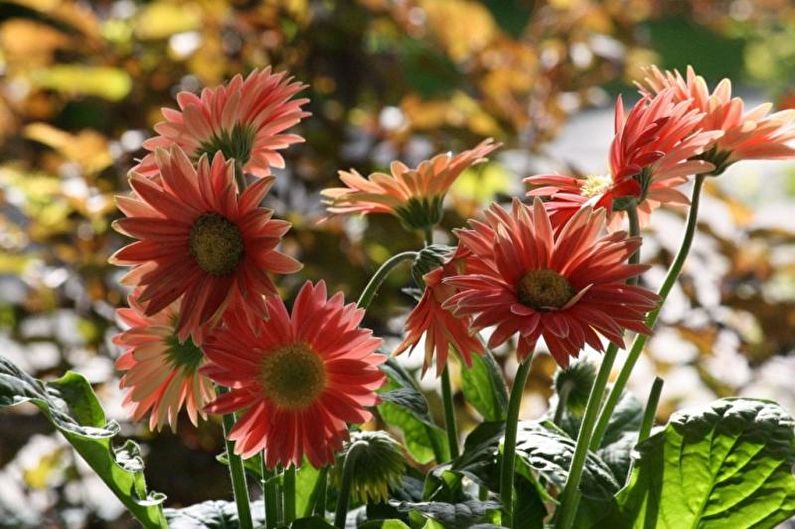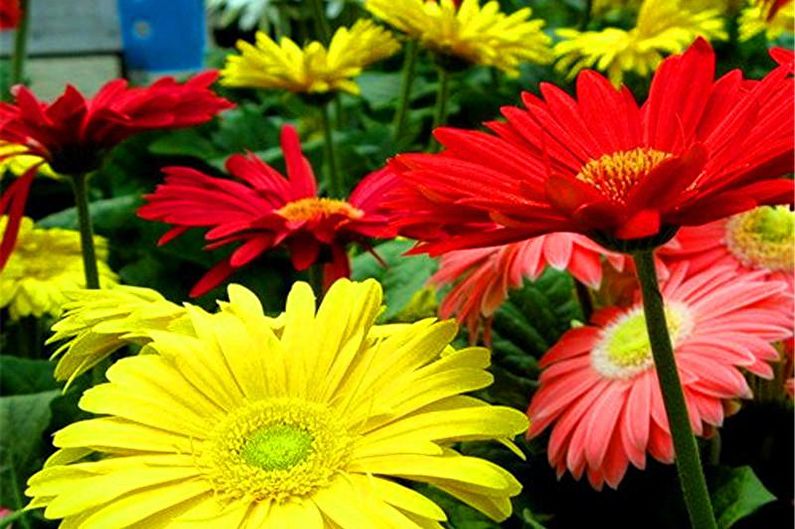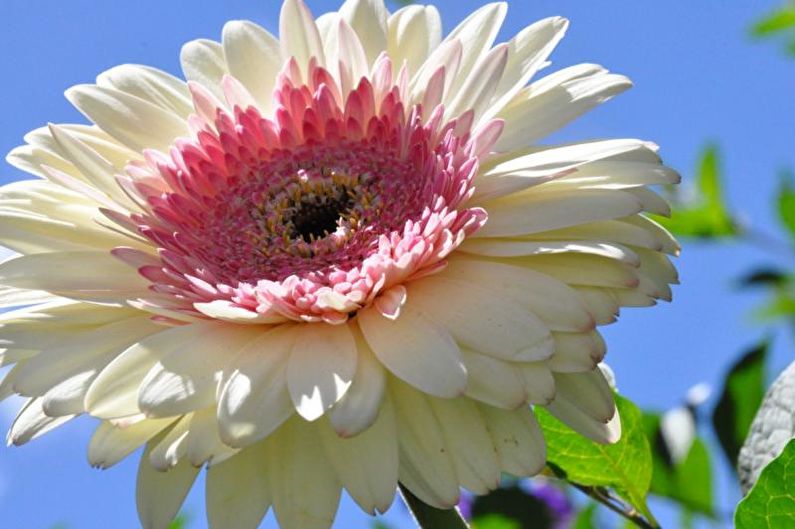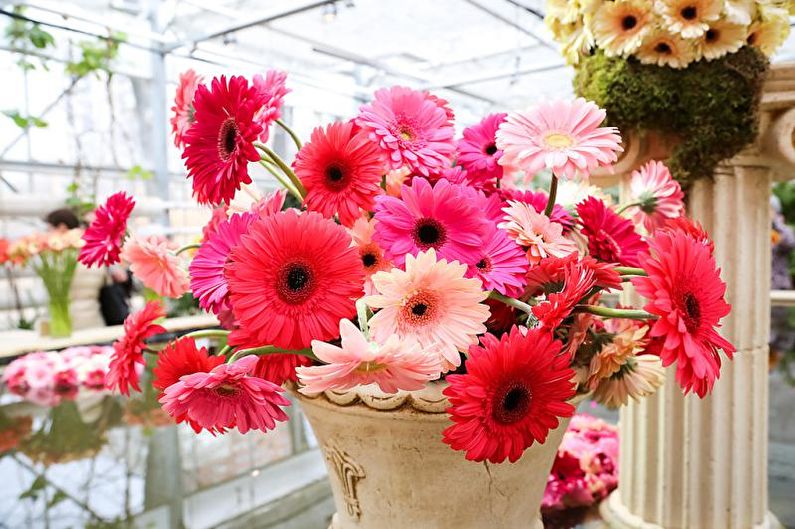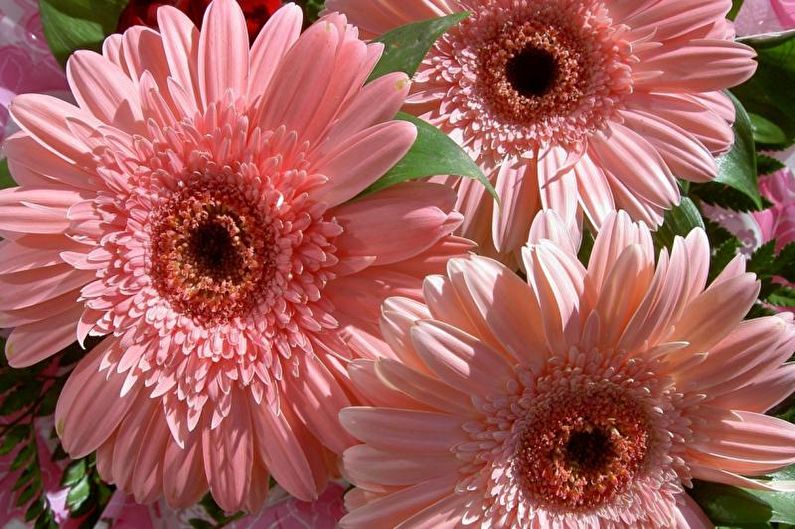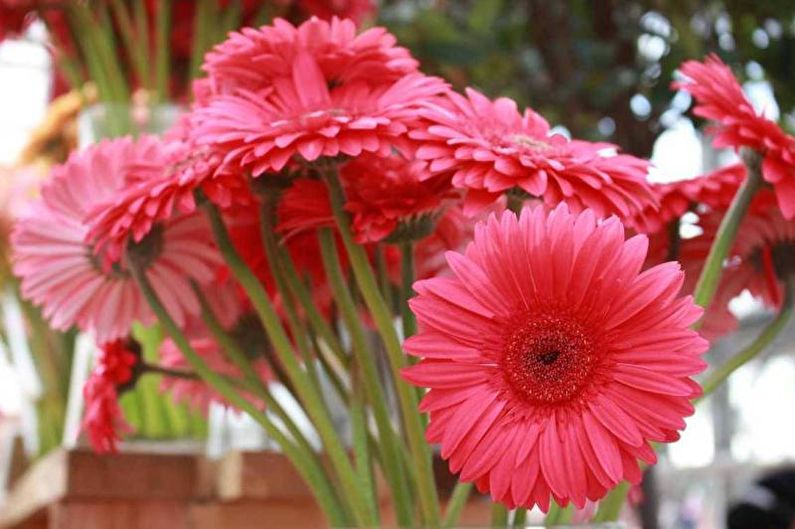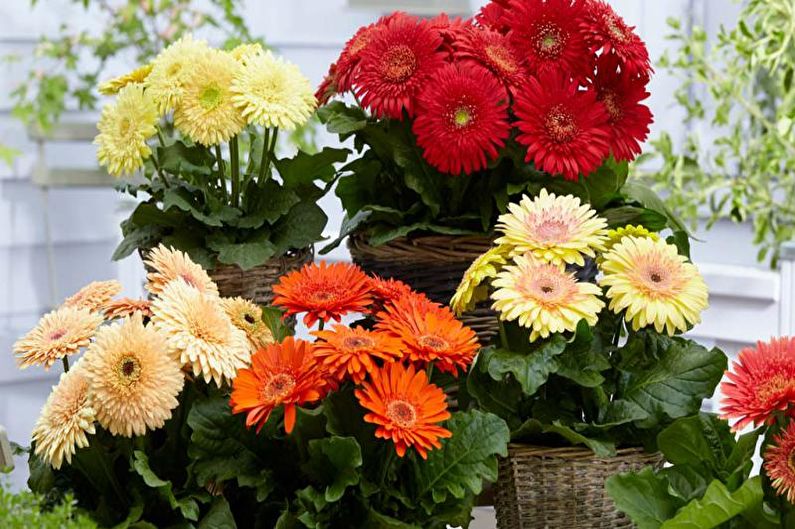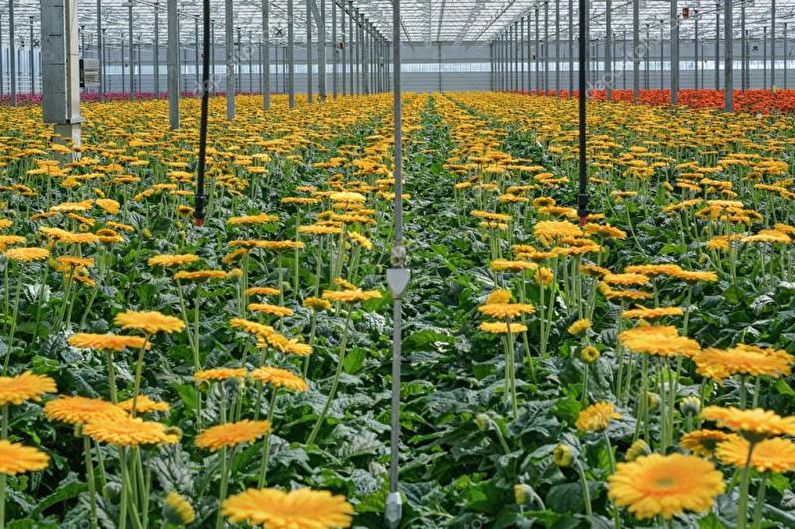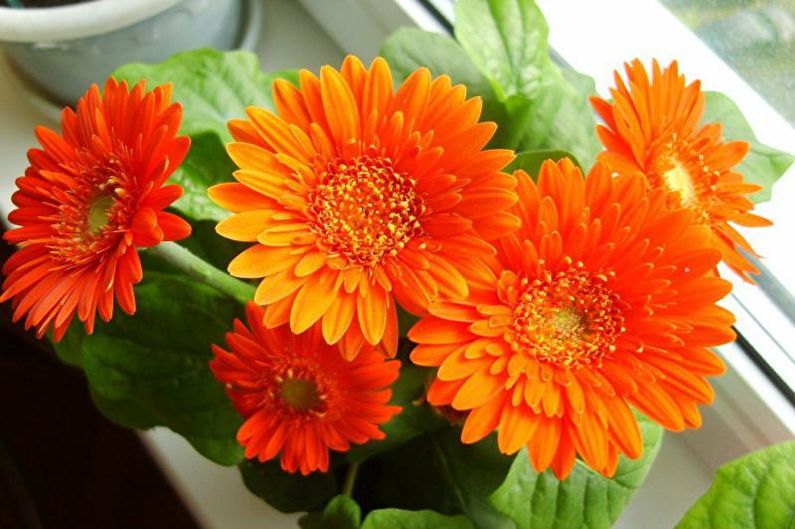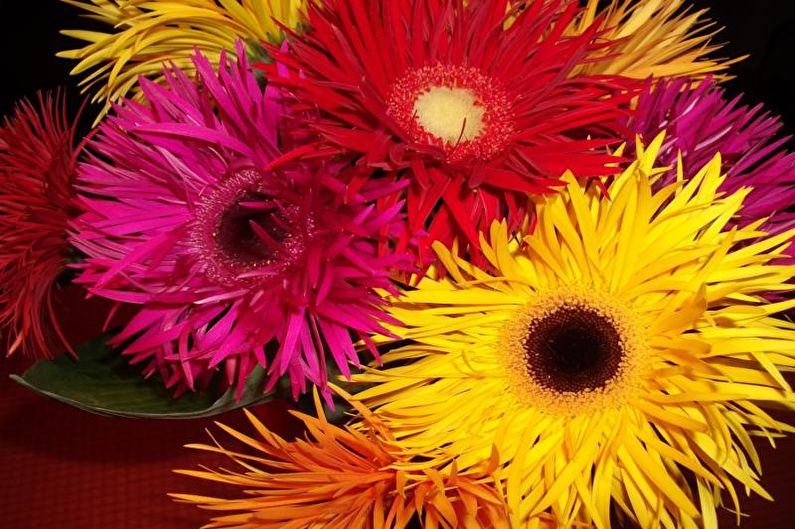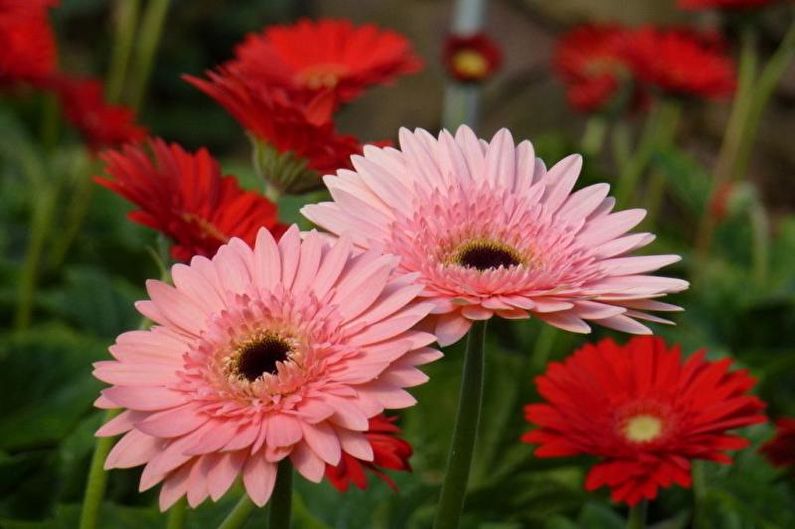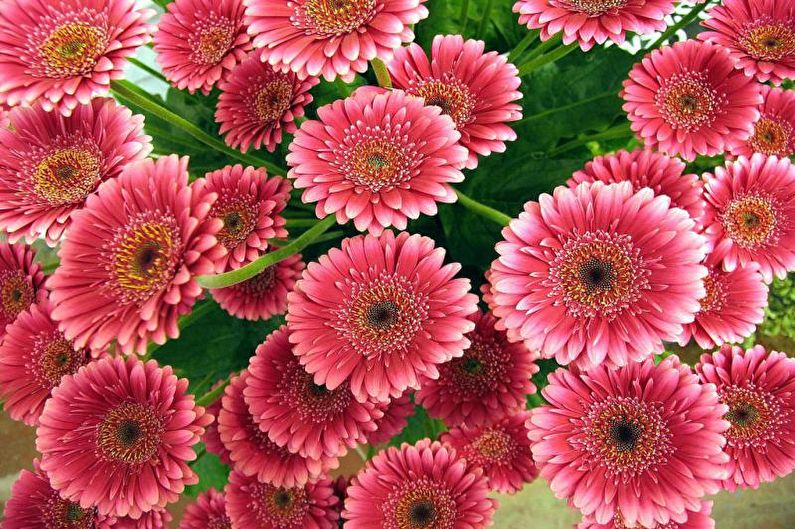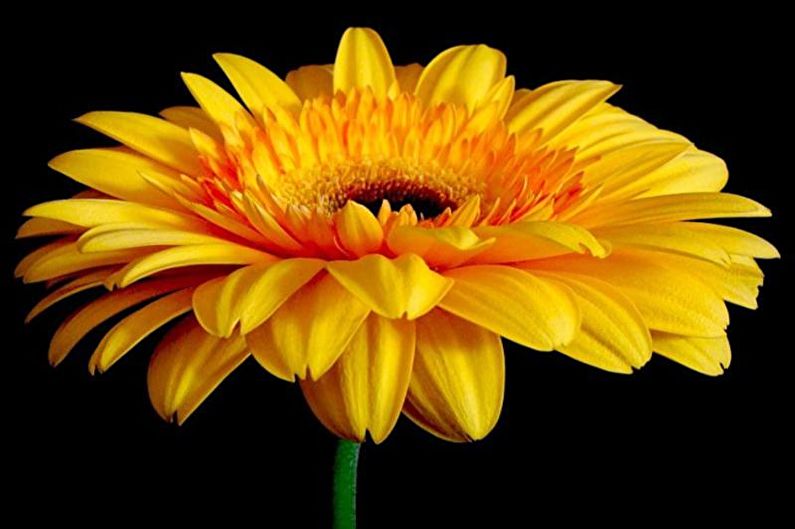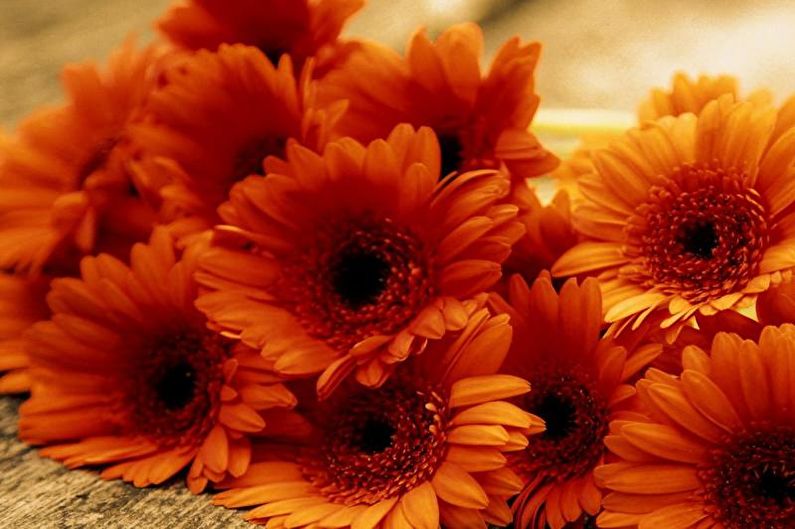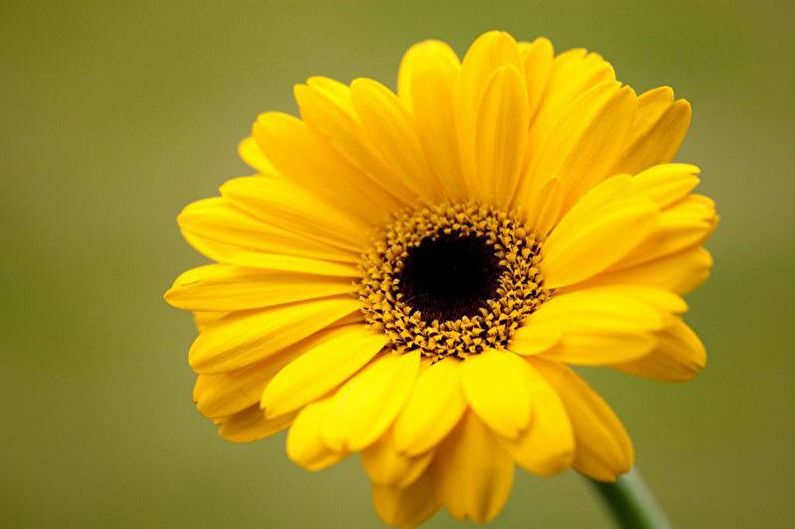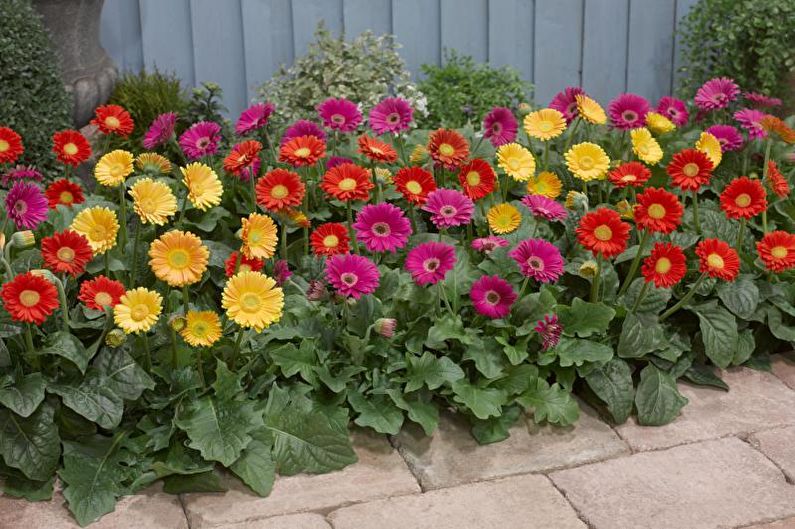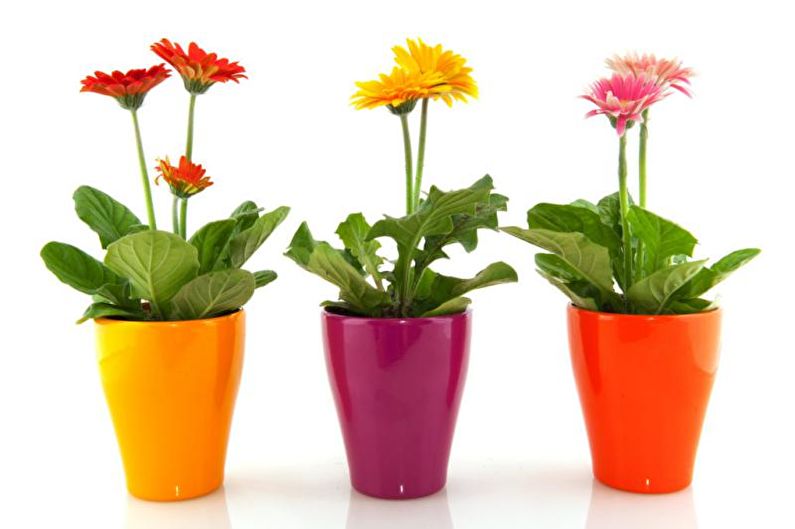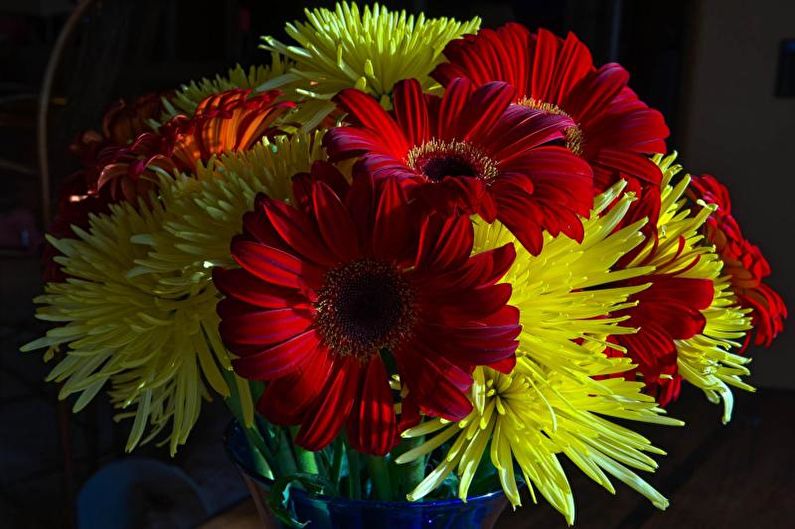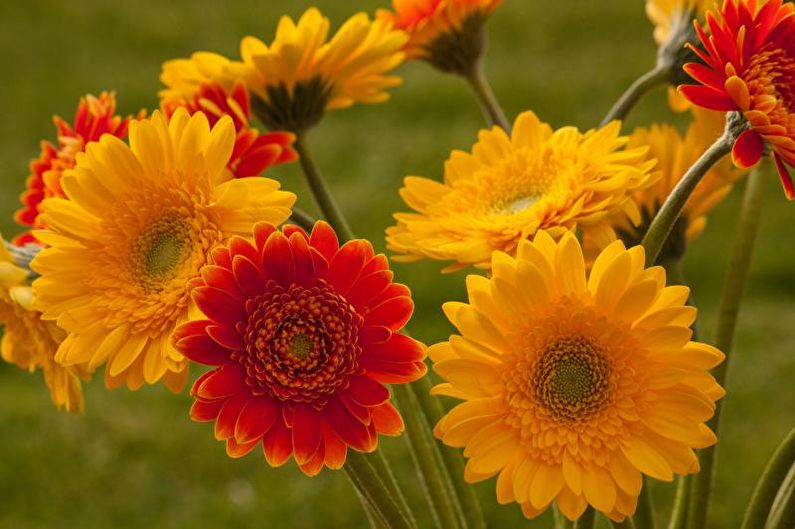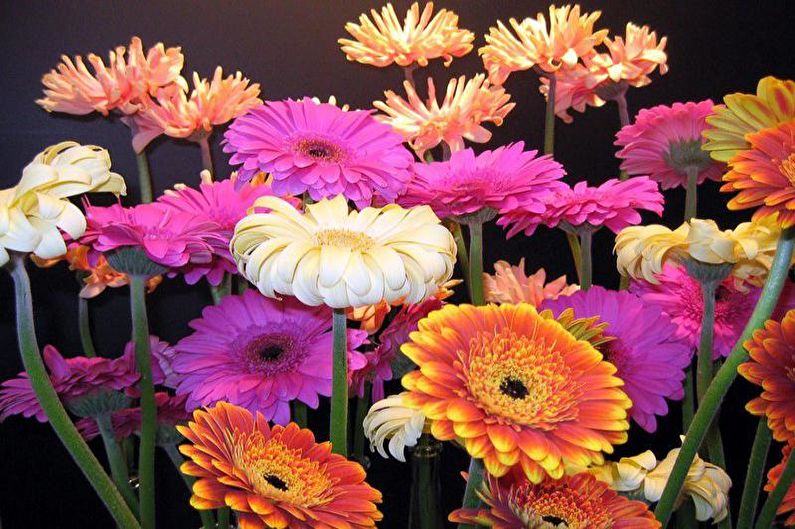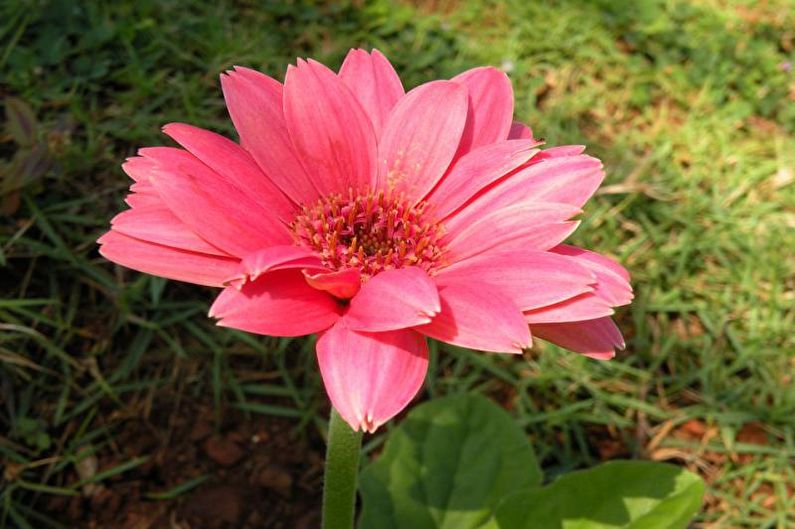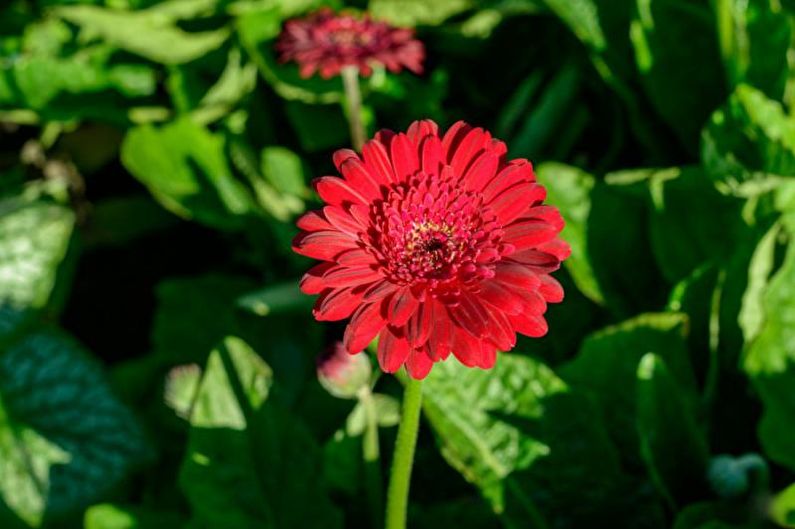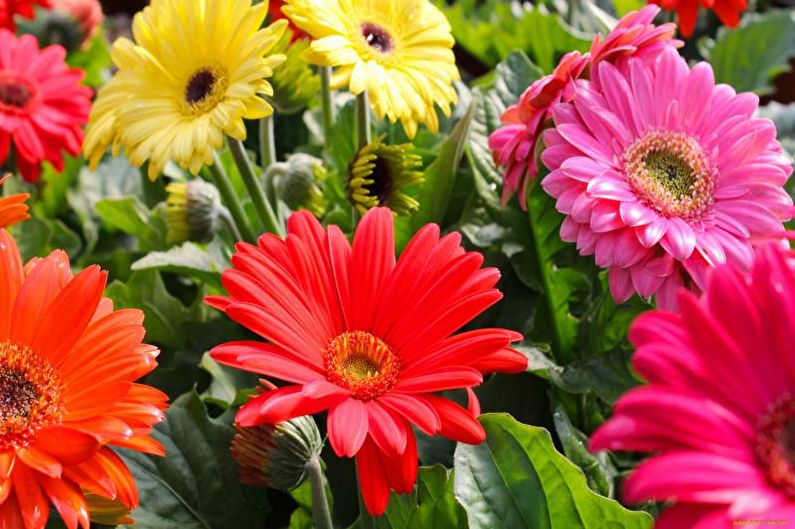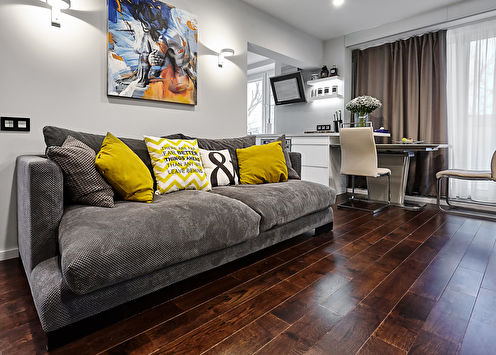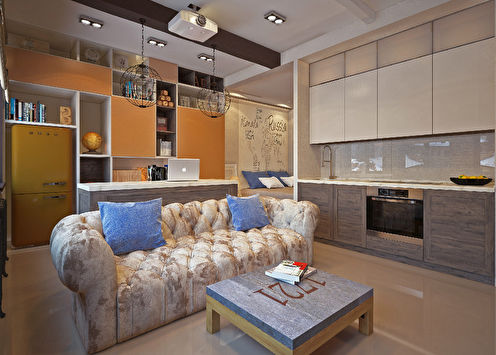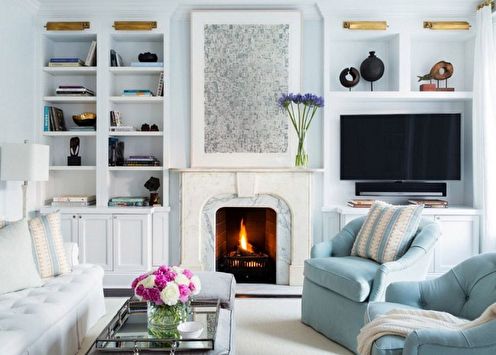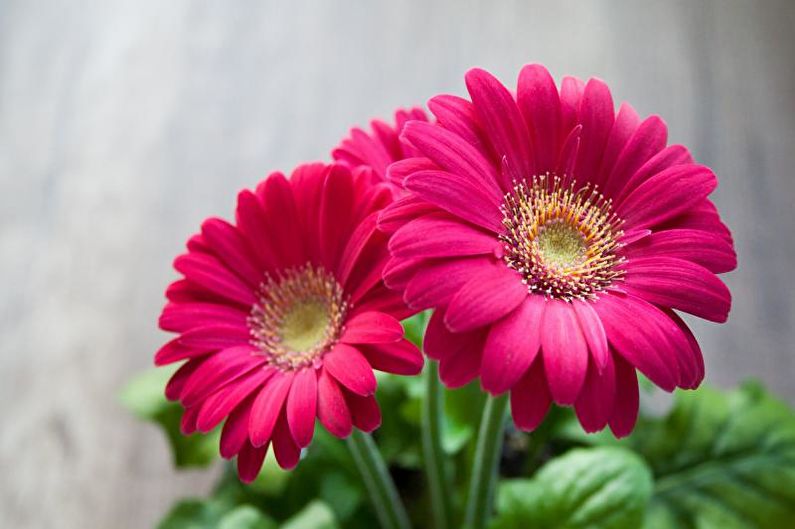
Few people know that the multi-colored “daisies” decorating window sills, shop windows and gift bouquets are not daisies, calendula, or even chrysanthemums, but tropical gerberas. They are distinguished by a rich and vibrant color of the petals, large flowers and a long flowering period, so they enjoy a special arrangement of florists. Depending on the variety and growing conditions, a gerbera can be either a garden or indoor plant. High decorativeness, stability and durability of this flower make it the center of any composition, be it a luxurious garland, an arch or just a boutonniere.
Gerbera Description
Like many other flowers, gerberas were brought to Europe from the South African colonies. The natural habitat of their growth is Madagascar, Zimbabwe, Mauritius and other countries of this region. The name was given to the plant by the botanist-discoverer Jan Gronovius in honor of his colleague Traugott Gerber. In the future, French and Dutch flower growers began to call these bright daisies “Transvaal daisies”.
Gerbera belongs to the family Astrovia and is a perennial plant. In the first year of growing from seeds, the bush does not bloom, but in the next few years it pleases with plentiful and long-lasting bouquets. The leaves of the gerbera are dark green in shape resembling something between a plantain and a dandelion. They are collected in a basal rosette, from the center of which bare stems up to 65 cm high appear. One flower blooms on each stalk, the diameter of which depends on the variety and can vary between 5-15 cm, large-flowered up to 30 cm.
Chamomile gerberas can be any color, excluding the blue-blue palette. There are also terry varieties - they are characterized by transitions of shades from the center to the edges, and the flowers themselves are very similar to asters. Cut gerberas remain fresh for a long time, so they are widely used for bouquets and festive decor. In water, they can stand up to 20 days.
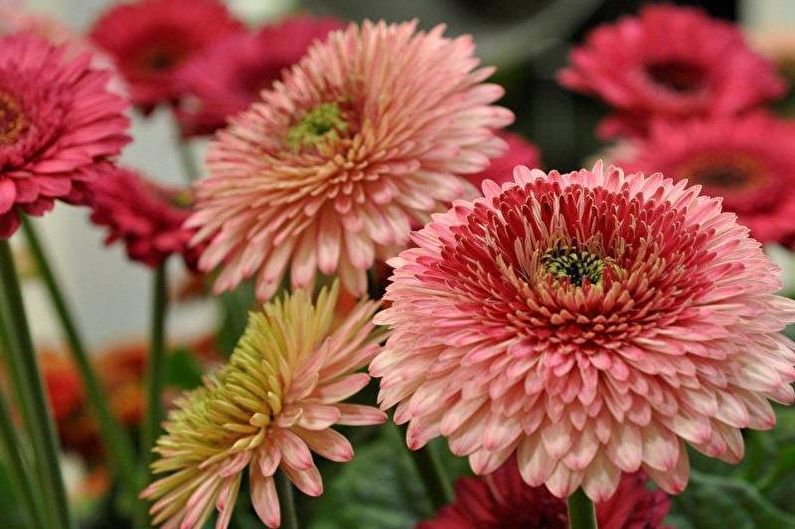
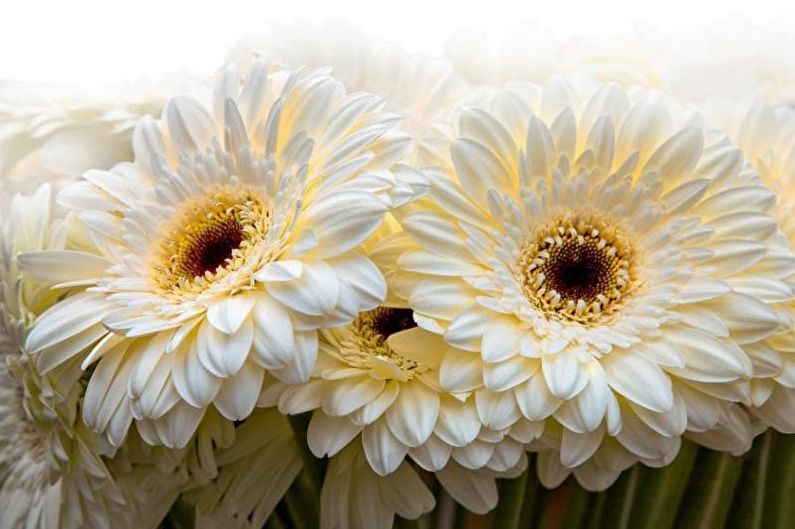
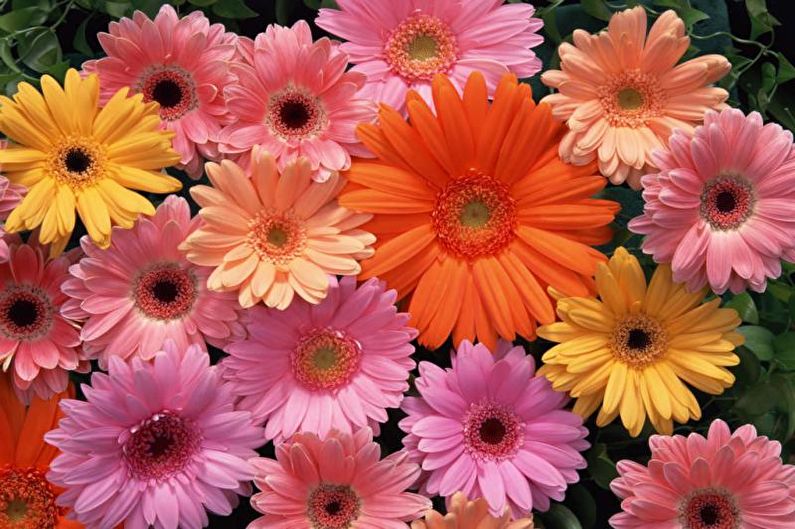
Gerbera Care
Blooming gerbera in a pot is an excellent gift and a great addition to any interior. Such a present, no doubt, will be appreciated by lovers of living plants who do not like cut buds. But even in this form, after a few weeks, bright inflorescences fade, and only the rosette of leaves remains. However, proper care will help resume flowering - you just need to provide a comfortable environment and wait a bit.
Watering - this is something without which no indoor flower can survive, except, perhaps, cacti. For gerbera, moderate moisture is suitable as the topsoil dries. Water should be settled, room temperature (+ 20C). Spraying is only needed in case of over-dried air, for example, near a battery or in too hot summers. It is recommended to select a fine dispersion atomizer so that not large droplets form, but a light cloud of fog.

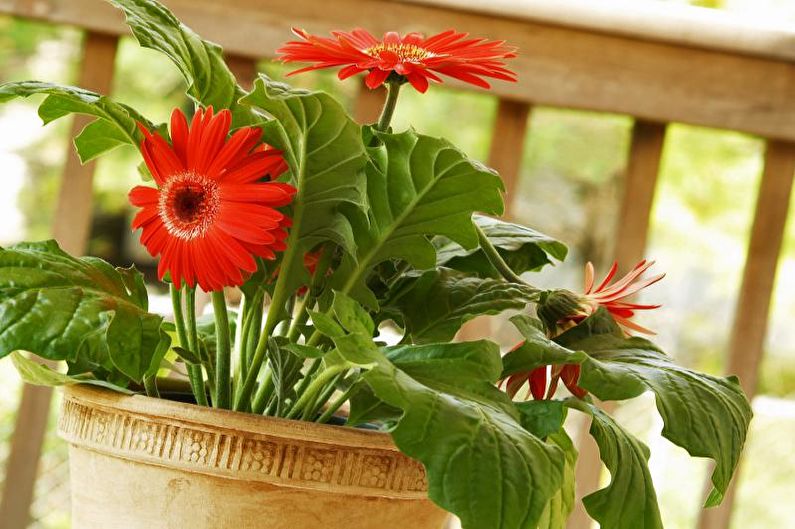
Temperature, which the indoor gerbera needs, is +20 ... + 24C, and in winter - not lower than + 14C. In the cold period, the plant is at rest, it can be watered less often, and you should not feed and transplant it. With increased heat and humidity, new buds do not appear. The most natural time for a gerbera to bloom is the off-season periods of early spring and early autumn, although when creating the necessary climate, exotic daisies will open at any convenient time.
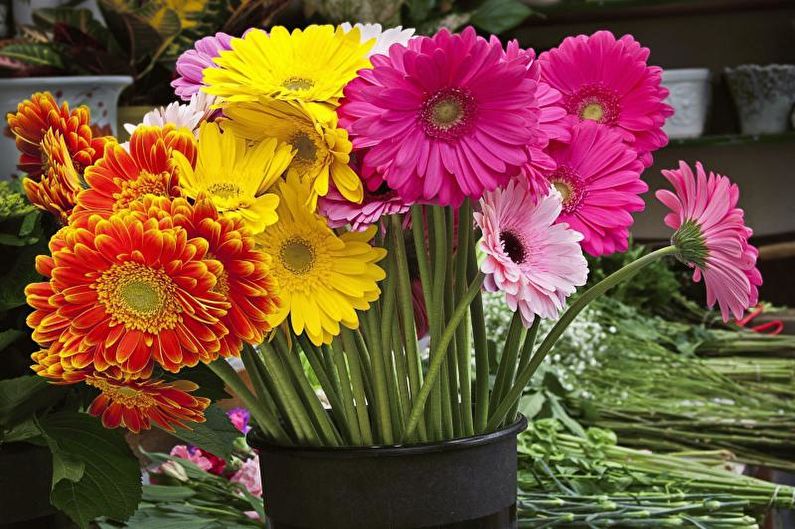
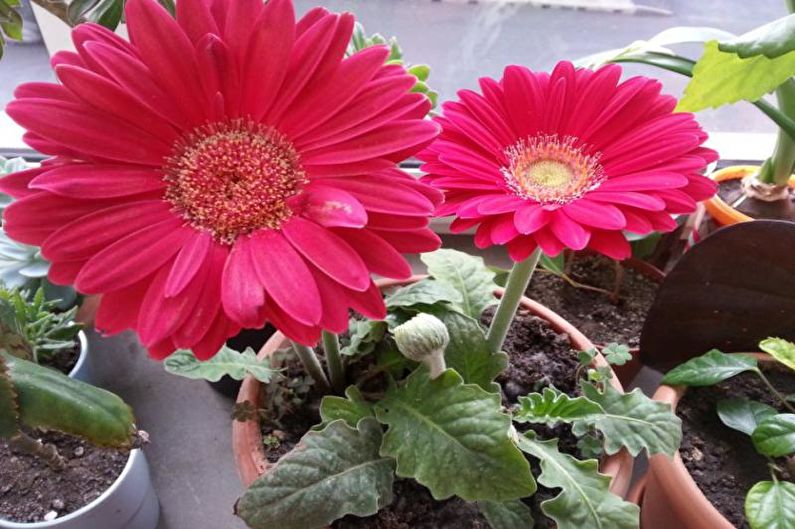
Lighting gerberas in the pot should be a little scattered - the direct rays of the sun, especially through the glass, have a detrimental effect on flowers and leaves.It is desirable to place the plant on the eastern or western windowsill, and from the south side the light can be softened with tulle, a translucent curtain or light blinds. Gerbera buds need about 12 hours of sunshine per day to open.
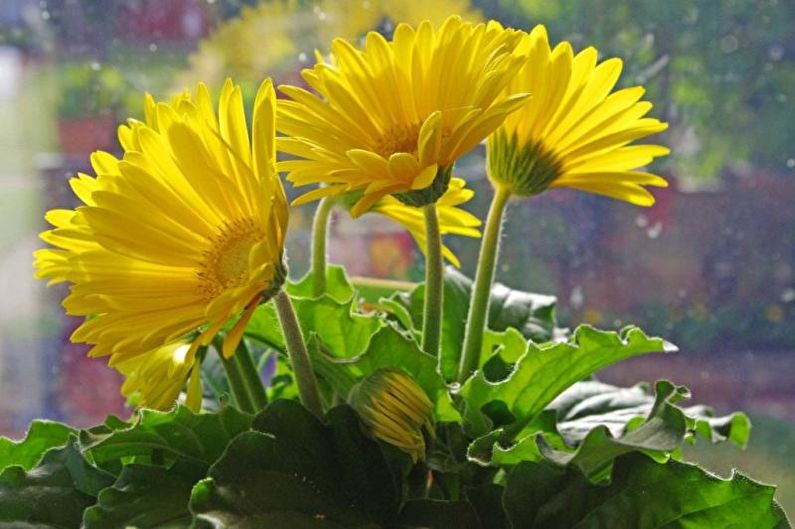
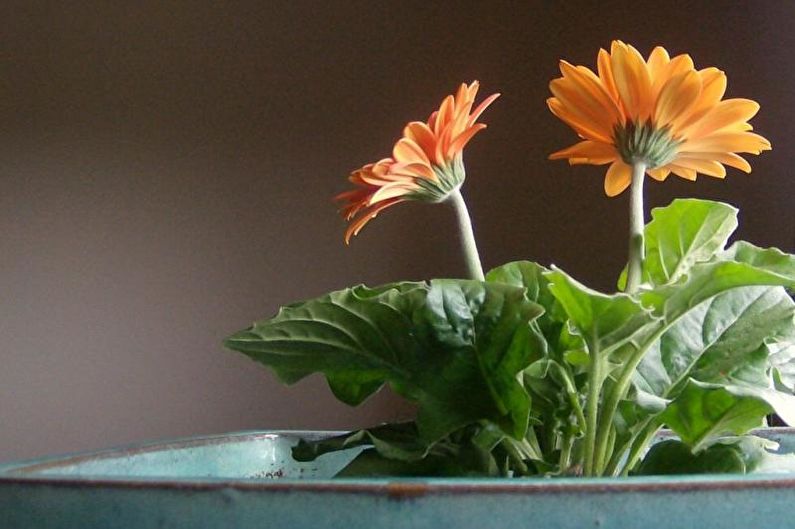
Fertilizers for “Transvaal chamomile”, only two types will be needed in a minimal amount - nitrogen ones during green mass growth (in February and July – August) and potash ones during flowering. As a rule, drugs are diluted in water and a weak solution is watered in potted soil. Organic additives cannot be introduced, since a tropical plant may die from them.
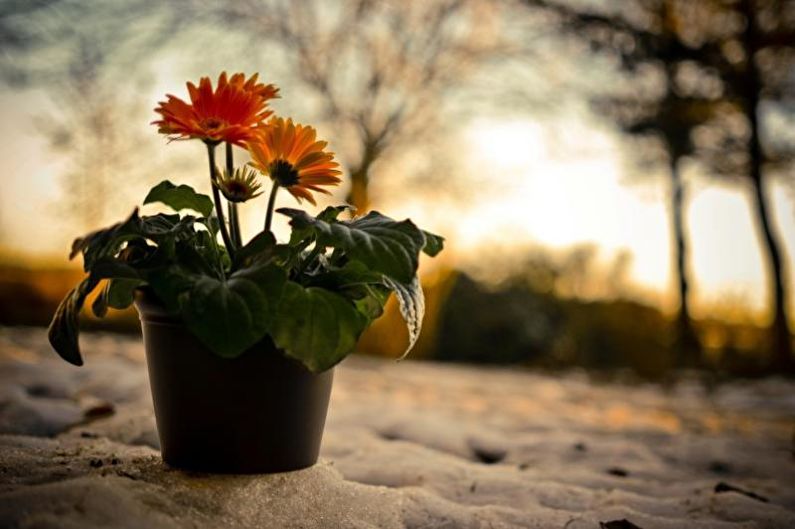
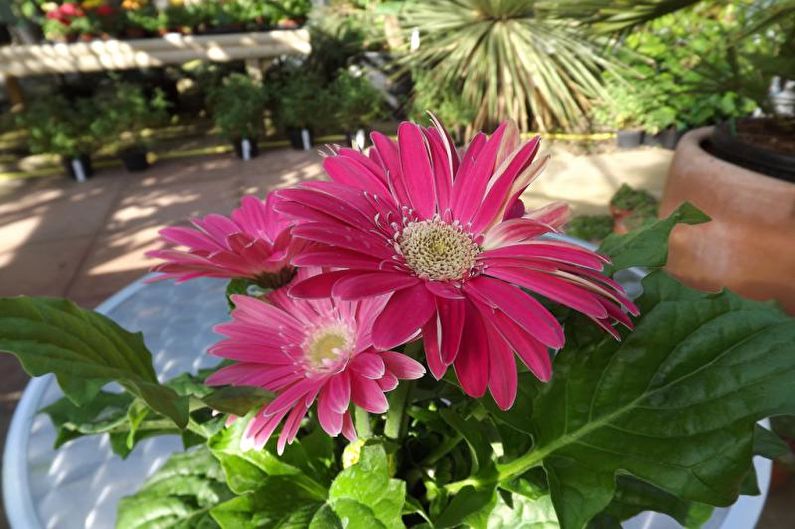
Transplantation Gerberas are recommended once a year. The pot should not be too large - only 2-4 cm more than the previous one so that the plant does not spend resources on the growth of excess roots. After the basic drainage layer, light peaty-leafy soil should be poured into the container, it is possible with the addition of sand and agroperlite (or small foam balls) as a baking powder. After 3-4 years, the gerbera ceases to bloom, but forms new processes that can be rooted separately. Also, when transplanting the plant can be divided into 2-4 parts, depending on size.
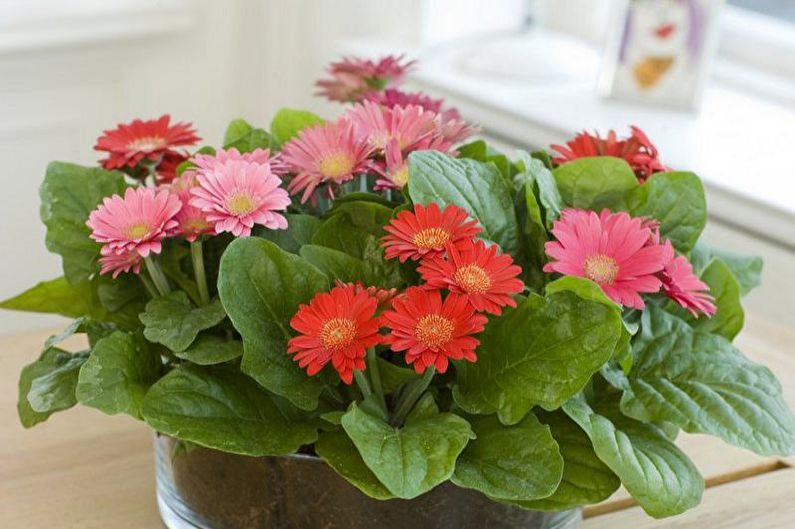
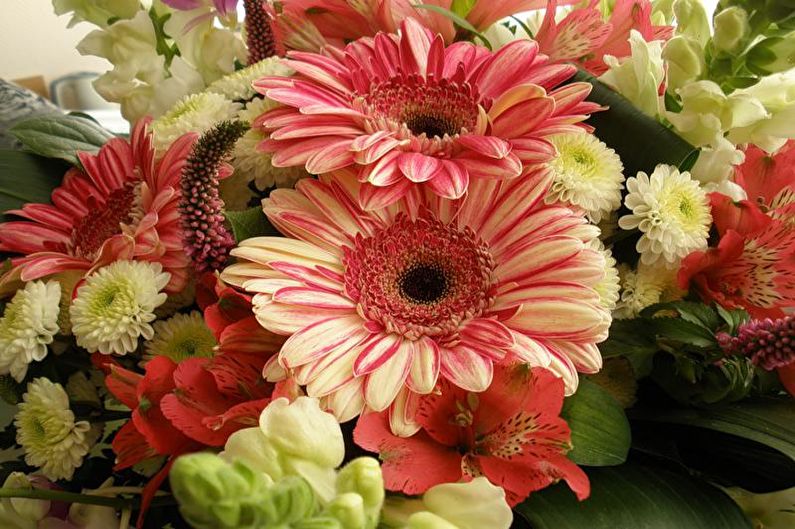
How to grow gerbera on the street
As a South African plant, the gerbera does not tolerate winter well in temperate latitudes. Here it is, rather, a home and greenhouse flower, but if desired, you can try to grow it in the open ground. There are only two ways to achieve this goal - to prepare seedlings or to keep last year's sprouts in a "sleeping" state, which is not always possible.
Gerbera seedling cultivation is a rather lengthy process. Seeds are traditionally sown in a container with soil, plentifully and often watered, then for them it is necessary to create long-term lighting, air circulation and a plus temperature of about 25C. When 2-3 leaves appear, the sprouts dive into separate pots, after which they require careful care (watering, light, fertilizers). It should be remembered that the first buds begin to appear only 10 months after germination, which means that gerbera should be sown approximately in the middle of summer, and almost a year later, in May - June, seedlings can be transferred to an open flowerbed. The soil for it should be very light, leafy peat, without any admixture of humus or compost.
After flowering is completed, but always before the start of frost (that is, at the end of October, November), the gerbera bushes should be slightly watered and dug together with an earthen lump. It is recommended to store the rhizome in a dark, humid place at a temperature of + 14C, wrapping it with a film. It is permissible to plant a plant on the street only with the beginning of persistently warm weather, when the night value of the thermometer does not fall below + 15C. Garden gerberas should grow on the sunny side, but not under the scorching rays - a small shadow from trees, bushes or fences will benefit them.
On dry days, exotic daisies need additional watering under the root. For this procedure, evening or morning hours are suitable, when the sun is not yet so active. Long rains and cold can inhibit flowering, but good drainage of the soil will save the gerbera from over-humidification damaging to it. To do this, the soil must contain sand, crushed charcoal, small shells, perlite or other disintegrants.
Most gerbera diseases and pests appear due to cold and excessive humidity, so the first step to save the flower is to remove damaged areas and transplant it into comfortable conditions, closer to heat and light, and in addition to use suitable fertilizers and growth stimulants. Attentive attitude to the plant will pay off handsomely when a real bouquet of bright red, pink, yellow or orange daisies opens in a green basket of leaves, and this flowering will last 2-3 months twice a year.


Gerbera - photo
For aesthetic pleasure, we offer you a selection of photos with these amazing colors. You will be able to see how unusual, different in shape and color gerberas can be. Enjoy your viewing and inspiration!
